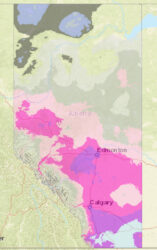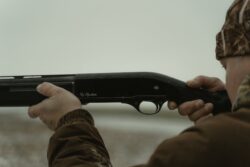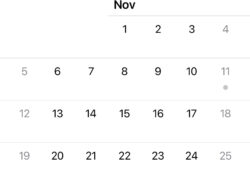Alberta, with its diverse landscapes and varying climates, is divided into multiple growing zones.
These zones help gardeners and farmers determine which plants are most likely to thrive in their specific region.
Understanding these zones is crucial for successful planting and cultivation.
What Exactly are Growing Zones in Alberta?
Growing zones, also known as plant hardiness zones, are geographical areas defined by a range of climatic conditions relevant to plant growth and survival.
In Alberta, these zones are primarily determined by the average annual minimum winter temperature.
They provide a guideline for which plants can survive the winter in that area.
Alberta’s Growing Zones: A Closer Look
- Zone 1a: This is the coldest zone in Alberta, with temperatures dropping as low as -45°C. It’s found in the northernmost parts of the province.
- Zone 1b: Slightly warmer than 1a, this zone experiences temperatures between -42.8°C to -40°C.
- Zone 2a: Covering a broader area, this zone has temperatures ranging from -40°C to -37.2°C.
- Zone 2b: This zone sees winter lows between -37.2°C to -34.4°C.
- Zone 3a: With temperatures between -34.4°C to -31.7°C, this zone covers parts of central Alberta.
- Zone 3b: This zone experiences temperatures from -31.7°C to -29°C.
- Zone 4a: Found in the southern regions, this zone has temperatures ranging between -29°C to -26.1°C.
(Note: These are just a few of the zones in Alberta. The province has zones extending up to Zone 7, but they are less common.)

Screenshot from plantmaps.com of Alberta plant growing hardiness zones.
Check out the Alberta Hardiness Growing Zones Interactive map here.
| Zone | Temp. Range | Region | Popular Plants |
|---|---|---|---|
| 1a | -45°C and below | Northernmost parts | Arctic Willow, Caragana |
| 1b | -42.8°C to -40°C | Northern regions | Siberian Fir, White Spruce |
| 2a | -40°C to -37.2°C | Central regions | Lodgepole Pine, Trembling Aspen |
| 2b | -37.2°C to -34.4°C | Central to Southern regions | Balsam Poplar, Jack Pine |
| 3a | -34.4°C to -31.7°C | Southern regions | White Birch, Blue Spruce |
| 3b | -31.7°C to -29°C | Southernmost parts | Douglas Fir, Rocky Mountain Juniper |
| 4a | -29°C to -26.1°C | Extreme Southern regions | Ponderosa Pine, Limber Pine |
FAQs about Growing Zones in Alberta
- Why are growing zones important? Growing zones help gardeners and farmers select plants that are suitable for their region, ensuring better growth and survival rates.
- Can I plant something outside of my zone? While it’s possible, plants outside of their recommended zones may require additional care, especially during extreme weather conditions.
- How often do these zones change? Growing zones can shift due to climate change. However, major shifts are typically observed over longer periods.
- Where can I find more detailed information about my specific area? The Government of Alberta and various agricultural organizations provide detailed maps and resources on growing zones.
Understanding Alberta’s Diverse Climate
Alberta’s vast landscapes, from the Rocky Mountains to the prairies, result in a diverse climate.
Recognizing the province’s growing zones can aid in making informed decisions about planting and cultivation, ensuring a fruitful harvest.
In Summary
- Alberta is divided into multiple growing zones based on average annual minimum winter temperatures.
- These zones provide guidelines for plant cultivation, ensuring better growth and survival rates.
- Understanding these zones is crucial for successful gardening and farming in the province.





